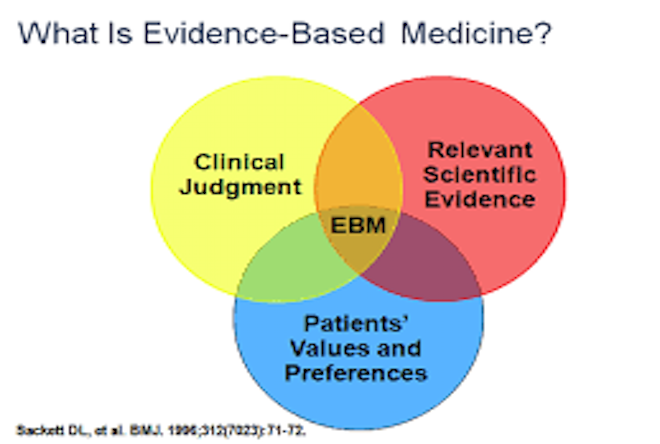Evidence-based practice (EBP) is an approach to clinical practice that has been gaining ground following its formal introduction in 1992. It started in medicine as evidence-based medicine (EBM) and spread to allied health professions, educational fields, and others. EBP is traditionally defined in terms of a “three legged stool” integrating three basic principles:
(1) the best available research evidence bearing on whether and why a treatment works rather than dogma or anecdotal evidence;
(2) clinical expertise (clinical judgment and experience) to rapidly identify each patient’s unique health state and diagnosis, their individual risks and benefits of potential interventions, and;
(3) client preferences and values.[1][2]
One of the main reasons that EBPs have been so successfully incorporated into treatment services is the vast amount of studies linking clients’ improved health outcomes and the general attitude that treatments should be based in scientific evidence (Institute of Medicine, 2001; Sackett & Haynes, 1995). It is now assumed that professionals must be well-informed and up-to-date with the newest knowledge in order to best serve their clients and remain professionally relevant (Gibbs, 2003; Pace, 2008; Patterson et al., 2012).
Evidence-based practice (EBP) involves complex and conscientious decision-making which is based not only on the available evidence but also on patient characteristics, situations, and preferences. It recognizes that care is individualized and ever changing and involves uncertainties and probabilities.
EBP develops individualized guidelines of best practices to inform the improvement of whatever professional task is at hand. Evidence-based practice is a philosophical approach that is in opposition to rules of thumb, folklore, and tradition. Examples of a reliance on “the way it was always done” can be found in almost every profession, even when those practices are contradicted by new and better information.
Key elements in using the best evidence to guide the practice of any professional include the development of questions using research-based evidence, the level and types of evidence to be used, and the assessment of effectiveness after completing the task or effort. One obvious problem with EBP in any field is the use of poor quality, contradictory, or incomplete evidence. Evidence-based practice continues to be a developing body of work for professions as diverse as education, psychology, economics, nursing, social work and architecture.


